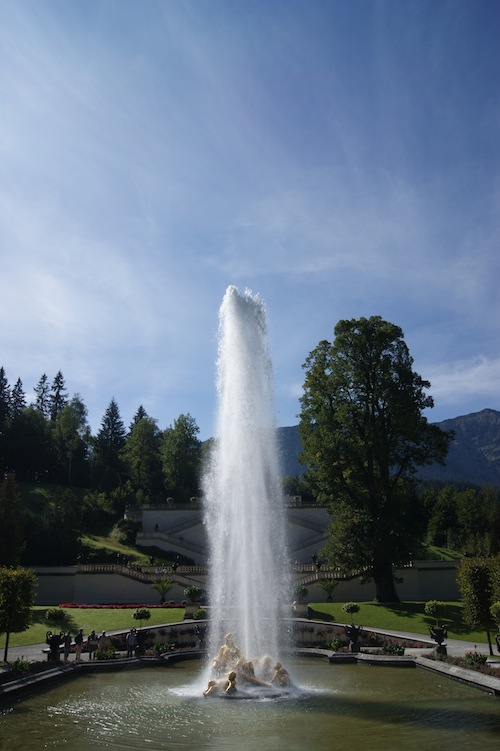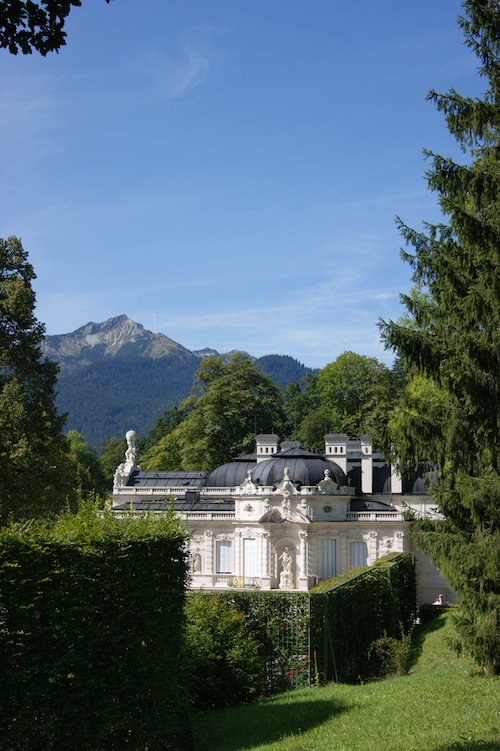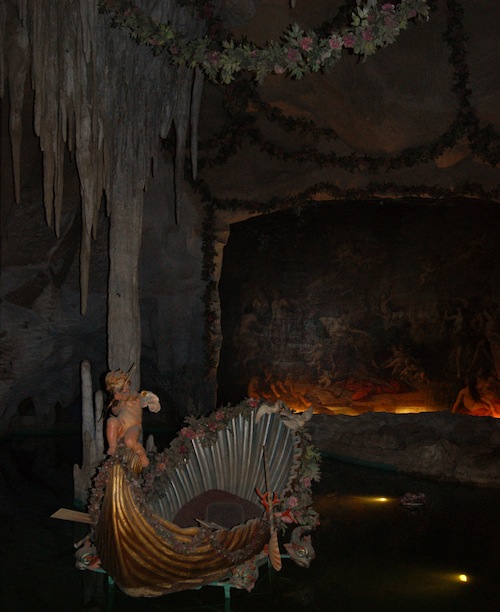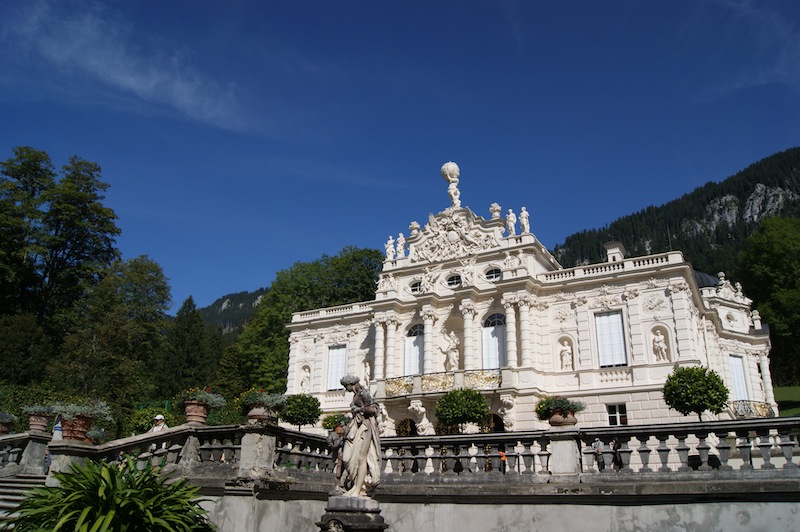King Ludwig II of Bavaria lived a strange life. Forced to surrender the independence of his kingdom to the all-consuming Prussia, reclusive and sexually confused, he sought consolation in the theatrical scores of Wagner and fantastical architectural projects.
The palaces he built are among Bavaria’s most popular tourist attractions but for the king they sustained his fantasy that he was still an all-powerful monarch overflowing with riches. The fairy tale Neuschwanstein is the most picturesque, the most outrageous but also the most crowded, so we opted for a day out at the much more manageable Linderhof. It’s the smallest of the three that stand as testament to his extravagance and the only one that he lived to see completed.
Designed in the rococo style, it took more than 20 years to complete but on a sunny day beneath rich blue skies it must’ve been worth the wait, and it remains a glorious sight.

Versailles, the palace of the French King Louis XIV, was an obvious inspiration and references to Ludwig’s heroic Sun King were obvious throughout the building as we took a guided tour. The bedroom is the largest of the diminutive palace’s rooms, typically over-the-top with gilt, art and marble; the hall of mirrors creates the impression of an endless chamber and a vast gallery of riches; the dining room includes a table that could be lowered, laid and returned, so that Ludwig didn’t have to be disturbed by his servants.
The grounds are as spectacular as the palace itself, surrounded by formal gardens and landscaped woodlands. A fountain spurts 25 metres into the air at the front of the building, while to the rear a cascade ends at an heroic sculpture of Hercules.

Elsewhere in the grounds is the artificial Venus Grotto, built to reflect the first act of Tannhäuser, composed by Ludwig’s beloved Wagner. The king liked to be rowed around the lake in his golden swan-boat and lose himself in the German myths and legends that sustained many of his fantasies, which would’ve been marginally more interesting than watching Coronation Street.

Beyond the grotto are the woods, but they too provide more evidence of Ludwig’s obsession with Wagner. The Hunding’s Hut was inspired by his Ride of the Valkyries, for example. Out there amid the trees, it was quiet and peaceful, something the secretive king would’ve appreciated.
However, Ludwig’s extravagance and his increasingly odd behaviour had not gone unnoticed. In 1886, his government deposed him, declaring him insane. Just days later his body was found, along with that of his doctor, in Lake Starnberg. It was ruled a suicide but there remain all manner of controversies surrounding his death. Was he murdered? Did he kill the doctor?
Nobody will ever know…

